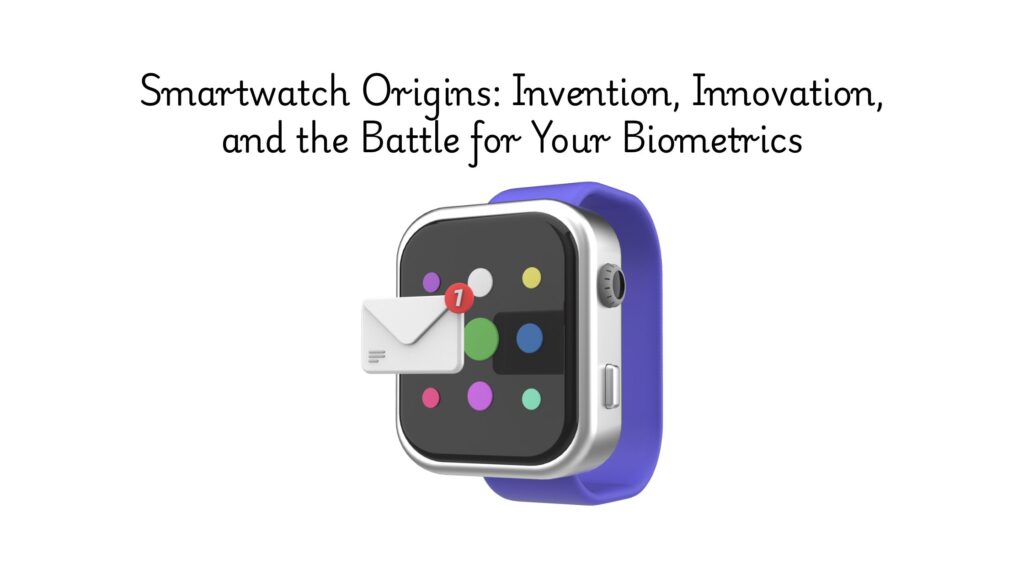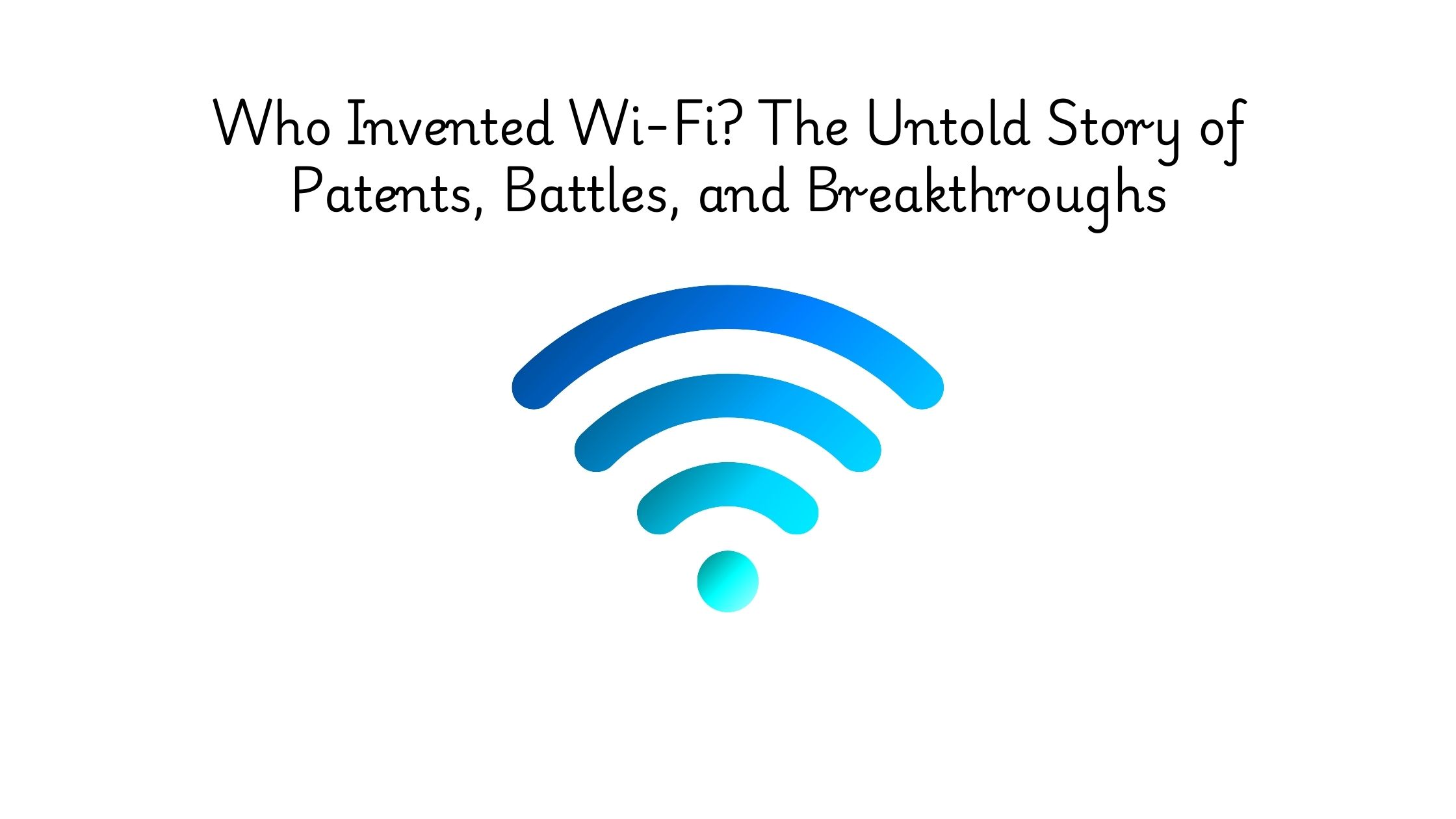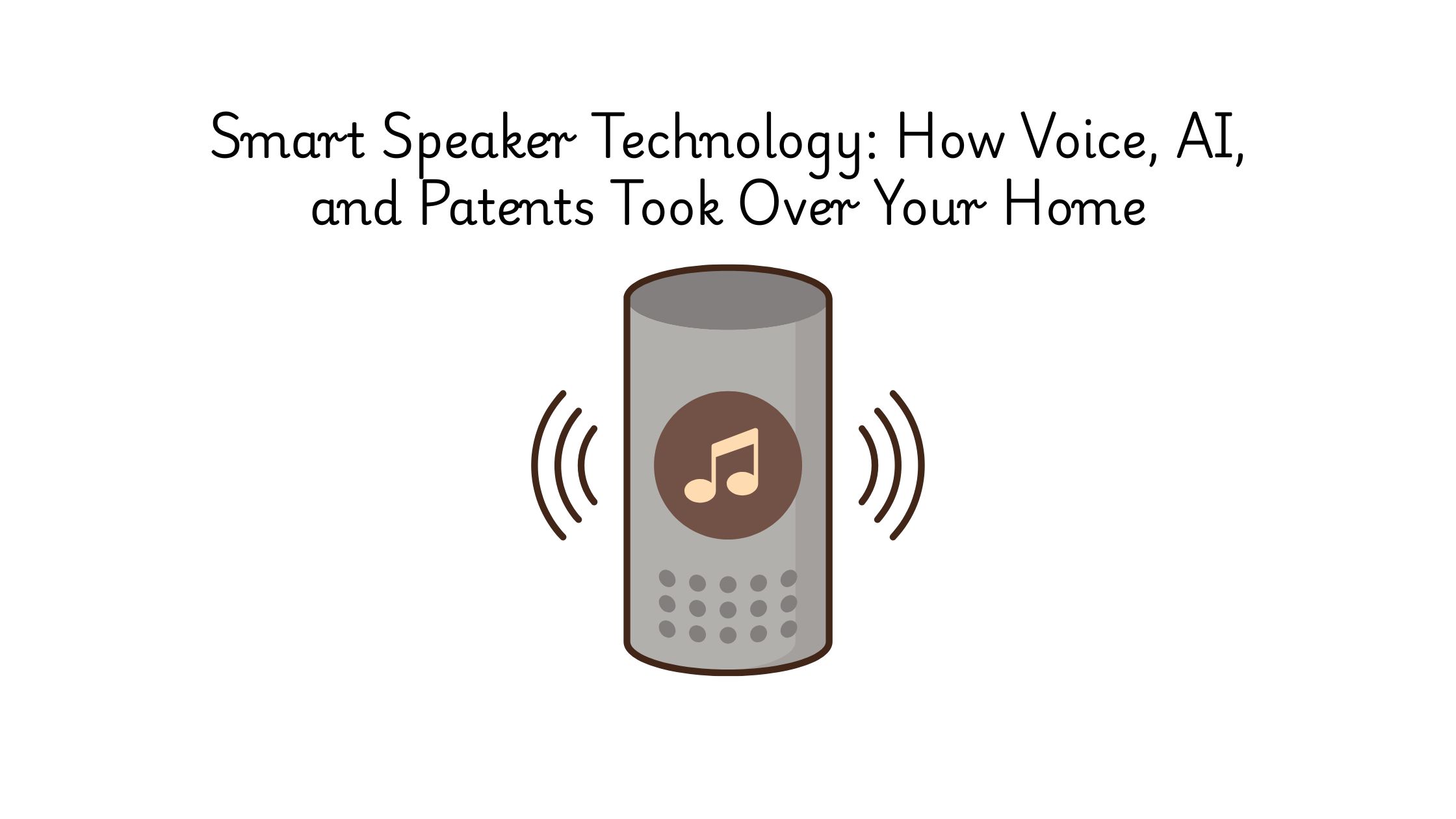Your wrist might be telling you more than just the time.
It tracks your heart rate. Logging your sleep. Nudging you to breathe. Some watches can even call emergency services or detect atrial fibrillation before you know something’s wrong.
But here’s the twist: most people have no idea how we got here. They think Apple invented the smartwatch. Or maybe Fitbit. But the road to the modern wrist computer is way messier than that.
Behind every flick of the wrist is a web of inventions, lawsuits, and forgotten pioneers. From calculator watches in the ’80s to blood oxygen sensors today, the real story of smartwatches spans decades of innovation. It is layered with pioneering patents, health tech breakthroughs, and a few high-stakes courtroom showdowns that shaped today’s wearables market. In this article, we’ll unpack:
- Who really built the first “smart” watch (and why it’s not who you think).
- The core patents that power today’s health-tracking tech.
- The legal fights that tried to stop innovation on the wrist.
- And how you can explore these hidden patents using the Global Patent Search tool.
Let’s rewind the clock.
The Origins of the Smartwatch: From Geeky Gadget to Health-Tracking Powerhouse
Most people think the smartwatch was invented in Silicon Valley sometime after the iPhone. The truth? It started as a calculator on your wrist and slowly evolved into one of the most sophisticated consumer technologies of our time. Let’s rewind.
The First Digital Watches: Setting the Foundation (1970s–1990s)
In 1972, Hamilton Watch Company and Electro/Data Inc. launched the Pulsar Time Computer, the world’s first digital wristwatch. It had no smart features, but it kickstarted a new era of electronic wearables.
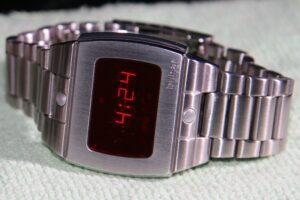
Source – Timesticking
By the 1980s, Seiko and Casio were pushing the boundaries. Seiko’s Data 2000 and RC Series could store text, sync with PCs, and even run rudimentary apps. Casio followed with its iconic calculator and databank watches, a massive hit with students and tech enthusiasts.
In 2000, IBM’s WatchPad, developed with Citizen, introduced a touchscreen, accelerometer, and fingerprint sensor running Linux. It was ahead of its time, and it quietly laid the groundwork for the modern smartwatch OS.
These early devices were clunky and niche, but they proved a bold idea: a watch could be more than a timepiece.
The Turning Point: From Notifications to Health (2000s–2015)
In the early 2000s, watches started getting connected. Microsoft SPOT (2004) delivered real-time data via FM signals. Sony Ericsson’s MBW-100 (2006) used Bluetooth to sync with phones. Both were early attempts at wrist-based utility but failed to take off.
Then came the fitness tracking wave.
Fitbit (founded in 2007, launched in 2009) didn’t look like a watch, but it changed everything. It turned step tracking and calorie counting into a lifestyle. Nike+ FuelBand and Jawbone UP followed, making wearable data cool.
In 2013, Pebble exploded on Kickstarter, raising $10 million. It introduced custom watch faces, notifications, and an open app ecosystem, all on an e-paper screen with multi-day battery life. It wasn’t perfect, but it proved the demand was real.
Samsung joined the race the same year with the Galaxy Gear, and while early models were clunky, they signaled that big tech was ready to bet on your wrist.
The Smartwatch as We Know It: Apple, Google, and the Fight for the Wrist (2015–2025)
When the Apple Watch launched in 2015, it didn’t invent the smartwatch. But it defined it.
Apple focused on three pillars: fitness, notifications, and design. Each new model added more health features, like an ECG app (Series 4), fall detection (Series 4), blood oxygen monitoring (Series 6), and even temperature sensors (Series 8).
This wasn’t just a gadget. It was a personal health companion.
Meanwhile, Google was building Wear OS, an Android-based platform used by Fossil, LG, and Motorola. After years of fragmented hardware, Google made a decisive move in 2019: it acquired Fitbit, and in 2022, it launched the Pixel Watch, a blend of Fitbit’s health tracking and Google’s ecosystem.
Samsung pivoted, too, ditching Tizen in favor of Wear OS, making Android smartwatches more unified.
Today, smartwatches are:
- Detecting irregular heart rhythms and sleep apnea.
- Tracking ovulation and skin temperature.
- Calling emergency services automatically after falls or crashes.
They’re not just extensions of your phone. They’re medical-grade sensors, and that shift has brought serious IP attention.
In fact, the Apple Watch faced a US import ban in 2023 after Masimo accused it of infringing on its blood oxygen monitoring patents. The case escalated quickly from the ITC to federal court, and Apple temporarily stopped selling the latest models in the U.S. The ban was later paused, but the message was clear: the wrist is now prime IP real estate.
The Battle for Your Biometrics: Why Smartwatch Sensors Are a Patent Goldmine?
Smartwatches have transformed from simple timepieces to sophisticated health monitoring devices that track metrics like heart rate, blood oxygen levels, and even electrocardiograms (ECG). This evolution has not only revolutionized personal health tracking but has also ignited intense patent battles among tech and medical device companies. Each is vying for dominance in the lucrative biosensor market.
The Rise of Biosensor Patents in Wearable Technology
The integration of biosensors into wearable devices has been a game-changer. Companies have invested heavily in developing sensors that can non-invasively monitor various health parameters. For instance, photoplethysmography (PPG) is widely used to measure heart rate by detecting blood volume changes in the microvascular bed of tissue. Advancements have extended to measuring blood oxygen saturation (SpO₂), ECG, and electrodermal activity (EDA), providing users with a comprehensive health overview.
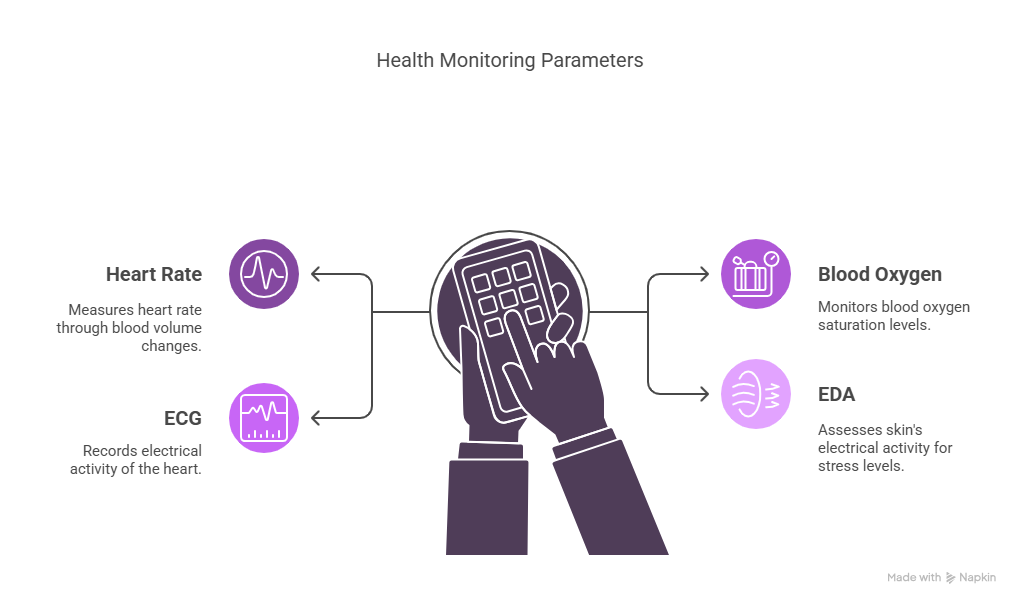
Did you know – The convergence of metabolic health and wearables is also starting to show up in litigation, as seen in Novo Nordisk’s US12029779B2, a patent focused on weight loss innovations that raises broader questions about biosensor IP across healthcare and consumer tech.
Pioneers and Their Patented Innovations
Several companies have been at the forefront of integrating health sensors into smartwatches:
- Apple Inc.: Introduced ECG capabilities in the Apple Watch Series 4 and blood oxygen monitoring in subsequent models. These features have been central to Apple’s health-focused marketing strategy.
- Fitbit: Launched the Fitbit Sense in 2020, featuring an EDA sensor for stress management, along with ECG and SpO₂ monitoring.
- Masimo Corporation: A medical technology company specializing in non-invasive monitoring technologies, holding patents for pulse oximetry sensors.
Legal Disputes Over Sensor Technologies
The race to dominate the biosensor market has led to significant legal confrontations:
- Masimo vs. Apple: Masimo accused Apple of infringing on its pulse oximetry patents, leading to a U.S. International Trade Commission ruling in 2023 that resulted in a temporary ban on certain Apple Watch models. Apple responded by disabling the blood oxygen feature in affected devices sold in the U.S.
- AliveCor vs. Apple: AliveCor alleged that Apple’s ECG technology infringed on its patents and filed an antitrust lawsuit. However, a U.S. federal appeals court dismissed the case in early 2024.
These legal battles underscore the intricate relationship between innovation and intellectual property in the wearable tech industry. Companies strive to offer cutting-edge health monitoring features while navigating a complex web of existing patents.
But long before courtrooms got involved, the building blocks of the smartwatch were already being laid, one patent at a time. To understand where it all began, we turned to the patents themselves.
The Patents That Built the Smarwatch Era
The smartwatch as we know it today: combining timekeeping with smartphone-like features and health tracking, didn’t emerge overnight. Its evolution is built on decades of innovation in wearable electronics, wireless communication, and biometric sensing.
To trace the origins of this technology, we used the Global Patent Search tool, which semantically links descriptive queries to relevant patents from across global databases, even if they’re decades old.
We entered the query: “Wrist-worn device combining timekeeping with smartphone-like features and health tracking” and analyzed filings between 1960 and 2000 to uncover the early breakthroughs behind today’s smartwatches.
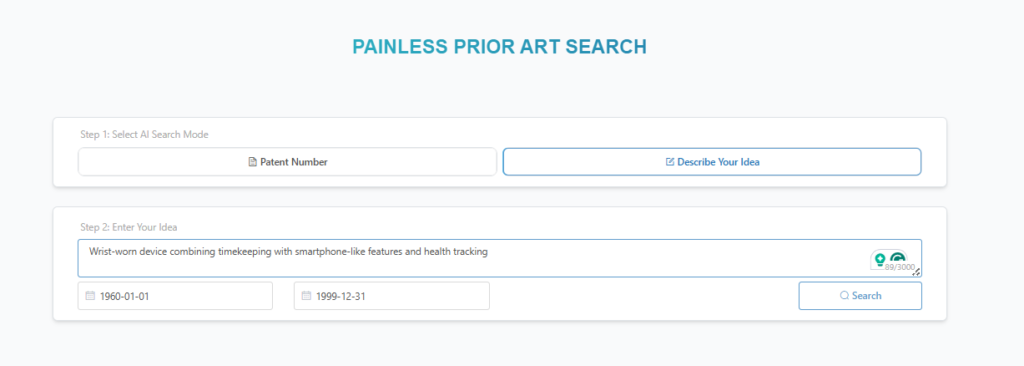
Source: GPS
Here’s what we found.
From GPS-enabled chronometers to solar-powered wrist radios, these patents reveal the gradual layering of technologies that define smartwatches today. Below is a chronological list of 9 foundational patents and why each was instrumental in shaping this wearable revolution.
| Priority Date | Patent Number | Title | Why It’s Foundational |
| 1985-04-25 | FR2581214A1 | Timer Module For Vaccine Reminder Or The Like | Earliest example of a wearable timer system; a precursor to reminder features in modern health-tracking watches. |
| 1988-04-23 | WO8910585A1 | Wrist Watch | Introduced multifunctional and ergonomic casing; key structural elements of today’s smartwatches. |
| 1989-03-23 | CN1045873A | Pointer Touch Type Quartz Clock Timekeeping Device (Chronopher) | Early implementation of tactile control on a wristwatch; an interface principle now standard in smartwatches. |
| 1990-04-18 | AU7851091A | Method And Apparatus For Accurate Time Maintenance | Enabled synchronized timekeeping via radio signals; a precursor to network-based auto time-sync in smartwatches. |
| 1991-08-08 | DE4226449A1 | Clock With Multiple Set Time Indicators | Introduced multi-alarm scheduling; critical for fitness tracking, notifications, and calendar sync. |
| 1992-03-18 | AU3749193A | Attachment For Bracelets Or Straps | Enabled modular watch attachments; an early look at personalization features now common in smartwatch bands and modules. |
| 1992-10-16 | US5274613A | Wristwatch Radiotelephone | Combined timekeeping and telephony; early groundwork for today’s smartwatch-phone hybrids. |
| 1993-01-26 | EP0608734A2 | Wristwatch | Introduced solar-powered, self-synced watches; key for energy efficiency and always-on tracking features. |
| 1996-06-10 | CN1221499A | Portable Precision Watch With Additional Functions | First wrist-worn chronograph to combine GPS, electronic computation, and vector display; laying the groundwork for location-aware smartwatch functionality. |
With patents driving both innovation and litigation in wearables, navigating this IP maze isn’t just for lawyers anymore. Whether you’re building the next big sensor or analyzing competitors, knowing who filed what and when has never mattered more. Thankfully, there is a tool that can help you in the process.
How Global Patent Search Helps You Navigate the IP Maze?
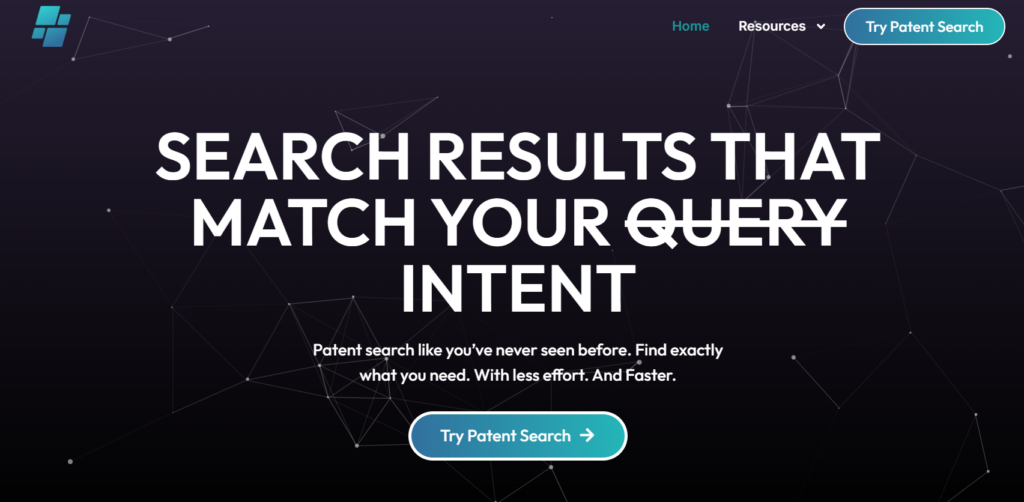
The Global Patent Search tool won’t hand you a master list of who owns smartwatch tech. But here’s what it does exceptionally well:
It helps you check whether your feature, like ECG alerts or temperature tracking, overlaps with existing patents, even if all you have is a product concept. By inputting descriptions such as “wearable device with ECG and SpO₂ monitoring,” users can uncover relevant patents, facilitating a deeper understanding of the field and aiding in strategic decision-making
It connects real patent claims to natural-language descriptions of what your wearable actually does.
It’s built for product teams and innovators, not just legal departments, so you can catch potential IP roadblocks early, before they become problems.
If you’re developing in wearable health or trying to understand the patent landscape around sensor tech, GPS gives you the visibility others miss. Explore the tool here: Global Patent Search.

